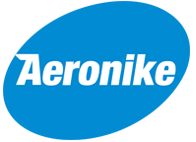City Explorer 3D | Workflow
City Explorer 3D is a technological platform that allows you to recreate a 3D virtual model of a territory by integrating data and aerial photogrammetric surveys from different sources (aerial-drone-land) in order to support the needs of different stakeholders, both institutional and private.
The Survey
The photogrammetric survey is performed by a two engine Partenavia P68 aircraft properly equipped with aero-photogrammetric cameras such as Vexcel Osprey Mark III Premium and a Vexcel UltraCam Lp.
During the flight, the photogrammetric camera located in the lower part of the fuselage, takes up the surface flown over, fixing it in the frames taken in succession at predetermined intervals.
Images acquisition
Through the trapdoor in the lower part of the plane’s cockpit, the Vexcel Osprey Mark III Premium or Vexcel UltraCam Lp photogrammetric camera lens it is turned perpendicular to the earth’s surface.
The digital camera mounted on a GSM 3000 stabilized platform interfaces with the Applanix GPS / INS POSAv 510 inertial system which allows the recording of positioning data, dimensions, grip centers, Roll, Pitch and Yaw angles; – Omega, Phi and Kappa – of each frame at the time of shooting. On board the pilot and the specialized operator manage all flight phases through the support of the POSTrack software (Flight Management System) Applanix that allows the visualization and the correct execution of the streaks through the appropriate display.
The plane proceeds along the flight line according to the altitude defined in the flight plan and at a constant cruising speed, a “swipe” of photographic shots is made according to a predetermined interval of shooting in order to guarantee the required GSD.
The sequence of clicks is such that there is a longitudinal covering of at least 75% (endlap) between two successive frames of the same strip.
Once the shooting is finished, the P68 reverses the course by 180° and performs a new shot alongside the one just completed trying to obtain a lateral covering between the frames of at least 75% (sidelap); in this way the total stereoscopic coverage of the entire survey area is guaranteed, which allows the reconstruction of the three-dimensional model of the surveyed city.
Data Processing and Aerotriangulation
The raw files supplied by the photogrammetric camera, together with the snap points and the internal and external orientations, are processed by the dedicated Ultramap software which contains the specific modules for project management.
During the data processing the quality control of the data produced during the flight is carried out, and the necessary changes are made regarding the adjustment of the color, density, contrast and balance levels of the large blocks of images. The final data is in GeoTif format in RGB, radiometric resolution 8/16 bit.
The program analyzes the projection of the images, adjusts the values entered for each photogroup and for each image, automatically processing the tie points in which the projections of the images intersect each other. The software thus identifies a point in the real world for each tie point, thus having known XYZ coordinates and known RGB colors. Following each round of aerotriangulation (AT), the algorithm optimizes and modifies the parameters loaded into the system for each photogroup and for each image.
After completing a first calculation, the Ground Control Points (GCPs) are imported which are automatically positioned by the software in the 3D space of the project.
The software automatically balances brightness and contrast to remove any traces of haze and reflections. It also minimizes the differences in brightness and color between neighboring images, so that, after this phase, all the images in the project, even if taken with different brightness, will be uniform.
Mesh processing
To achieve the completion of the 3D processing, the software performs the dense matching operation, through photogrammetry techniques to each pixel of the image it assigned a position in space, thus generating a digital surface model called DSM (Digital Surface Model ) georeferenced in the defined coordinate system. The DSM is a virtual and faithful reconstruction, on a real scale, of the territory taken from the images; that allows you to produce a 3D mesh called TIN (Triangulated Irregular Network) and on this replay of the portions of the original digital images by choosing them based on the angle of incidence of the face.
The resulting 3d textured mesh is dimensionally correct, accurate and graphically realistic. The mesh of the detected area is divided into smaller portions called tiles.
Visualization
The City Explorer 3D system provides 3D visualization in real time and in high quality of the scene on multiple devices. Considering the high quality of data, the only possibility to view the 3D model fluidly is through the use of a video game render engine, which will benefit from the GPU performances present on all of the smartphone classes.
Contact Us!
Call the phone number below or go to the contact section and send us a message!
